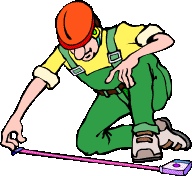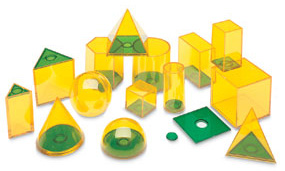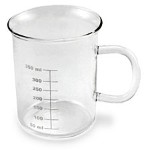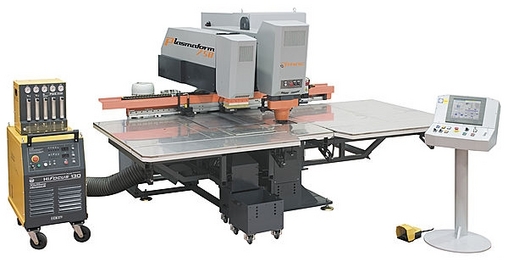



SUBJECT: – Mathematics: Grade Three
MATEMATIS AREA : Basic ideas in Counting, Measurement, Accuracy and Precisoin with Fractions
LESSON: Integrated view of Place Value and Fractions - Doing things the right size - Not too small, not too big









CDE - California Content Standards:
– Third Grade - Number Sense
By the end of grade three, students deepen their understanding of place value and their understanding of and skill with addition, subtraction, multiplication, and division of whole numbers. Students estimate, measure, and describe objects in space. They use patterns to help solve problems. They represent number relationships and conduct simple probability experiments.– Third Grade - Fractions
3.0 Students understand the relationship between whole numbers, simple fractions, and decimals:
3.1 Compare fractions represented by drawings or concrete materials to show equivalence and to add and subtract simple fractions in context (e.g., 1/2 of a pizza is the same amount as 2/4 of another pizza that is the same size; show that 3/8 is larger than 1/4).
3.2 Add and subtract simple fractions (e.g., determine that 1/8 + 3/8 is the same as 1/2).
3.3 Solve problems involving addition, subtraction, multiplication, and division of money amounts in decimal notation and multiply and divide money amounts in decimal notation by using whole-number multipliers and divisors.
3.4 Know and understand that fractions and decimals are two different representations of the same concept (e.g., 50 cents is 1/2 of a dollar, 75 cents is 3/4 of a dollar).(Common Core Standards) Develop understanding of fractions as numbers.
- 3.NF.1. Understand a fraction 1/b as the quantity formed by 1 part when a whole is partitioned into b equal parts; understand a fraction a/b as the quantity formed by a parts of size 1/b.
- 3.NF.2. Understand a fraction as a number on the number line; represent fractions on a number line diagram.
- Represent a fraction 1/b on a number line diagram by defining the interval from 0 to 1 as the whole and partitioning it into b equal parts. Recognize that each part has size 1/b and that the endpoint of the part based at 0 locates the number 1/b on the number line.
- Represent a fraction a/b on a number line diagram by marking off a lengths 1/b from 0. Recognize that the resulting interval has size a/b and that its endpoint locates the number a/b on the number line.
- 3.NF.3. Explain equivalence of fractions in special cases, and compare fractions by reasoning about their size.
- Understand two fractions as equivalent (equal) if they are the same size, or the same point on a number line.
- Recognize and generate simple equivalent fractions, e.g., 1/2 = 2/4, 4/6 = 2/3). Explain why the fractions are equivalent, e.g., by using a visual fraction model.
- Express whole numbers as fractions, and recognize fractions that are equivalent to whole numbers. Examples: Express 3 in the form 3 = 3/1; recognize that 6/1 = 6; locate 4/4 and 1 at the same point of a number line diagram.
- Compare two fractions with the same numerator or the same denominator by reasoning about their size. Recognize that comparisons are valid only when the two fractions refer to the same whole. Record the results of comparisons with the symbols >, =, or <, and justify the conclusions, e.g., by using a visual fraction model.
INSTRUCTIONAL GOAL: Students should understand why we use place-value forms, and be able to identify and manipulate quantities bundled or broken up in various concrete and symbolic forms, for amounts larger than one unit and smaller than one unit (fractions) and to extend this knowledge to other important place value systems, besides the decimal system.
PERFORMANCE OBJECTIVE: Students should understand what are the advantages of place-value systems, identify coded quantities and accurately and efficiently perform representation and operations with quantities such as:
Whole number: 12 = 10 + 2, 375 = 300 + 70 + 5, 8394 = 8000 + 300 + 90 + 4, etc.
Fraction: 1 = 2/2, 1/2 = 2/4, 1/4 = 2/8, 1/2 = 5/10 and basic addition and subtraction such as 1/2 + 1/4 = 3/4, 2/5 + 6/10 = 1, 1/2 + 1/3 + 1/6 = 1, 1 - 1/2 = 1/2, 1/2 - 1/4 = 1/4, 3/4 - 1/4 = 1/2.
Combined: 1.5 = 1 + 1/2, 83.75 = 80 + 3 + 1/2 + 1/4, 1/3 = (approx.) 0.3333....
Students should also understand that whole and less-than-a-unit quantities can be represented similarly using various number bases, particularly the base-2, binary system, used today for electronic computing.
RATIONALE : Including appropriate multisensory, real-life situated multi-representation forms of place-value and fraction concepts in an integrated cognitive sequence, including concrete and symbolic expressions should be helpful that are acceptable for students from the earlier grades. This should help lay a better foundation for further quantitative instruction, in later grades and through life.
LESSON CONTENT: The lesson will gradually introduce a variety of concrete and abstract, visual and asppropriate auditory representations of whole and fraction numbers for the students to see and manipulate, leading to the concept and activities of measurement. The lesson will allow expansions to include bases other than 10, and to use computer-based tools in the classroom.
INSTRUCTIONAL PROCEDURES
Focusing event (something to get the students' attention) |
As available, show REALISTIC (realia) place-value items, such as money, gram weights, base-number-blocks, counters or fraction pieces (plastic, cardboard) of a cut up pizza. Describe a situation in which the pizza need to be shared fairly (equal portions) among several people. If not available, try standard classroom fraction tiles. |
Teaching procedures (methods you will use) |
Start the projection on a wide screen (touch-screen if available) with a computer having access to an appropriate local, or remote webpage (Google) that allows user interaction on fraction pieces.
As appropriate for the classroom and situation, use the REPRESENTING MANY UNITS IN PROPORTIONAL BUNDLES activities (* depending on group) sequence to introduce the concept of Place Value. As appropriate for the classroom and situation, use the REPRESENTING FRACTIONS presentation sequence and the Money & coins as fractions display to introduce the concept of fractions, equivalent fraction representations, decimals and percents. (Also see examples at various helpful open sites, such as the NCTM Illuminations , Math Playground, and the National Library of Virtual Manipulatives). Check understanding (CDE CCSS): "3.1 Compare fractions represented by drawings or concrete materials to show equivalence and to add and subtract simple fractions in context (e.g., 1/2 of a pizza is the same amount as 2/4 of another pizza that is the same size; show that 3/8 is larger than 1/4). Each student will receive, or print individual whole and fraction exercise worksheets, to address what was just learned, providing for repetition which can lead to mastery. After some 10 minutes, work on the worksheet will be stopped to introduce the concepts of length/perimeter, surface/area and content/volumer ( http://www.animath.net/temp-lessonplan-2.html, http://www.animath.net/letsplay/basicgeomECC.html, http://www.animath.net/letsplay/LetsPlay-F.html ) . A series of hands-on measurement activities will then be made available for the students to play with ( http://www.animath.net/index2.html ). Time and availability permitting, introduce the "FAT-O-METER" human percent-body-fat measurement tool for measurement of human skinfold and fat tissue (intended for monitoring of obesity) to support student health awareness and motivate healthy nutritional and physical activity practices...
|
Formative check (progress checks throughout the lesson) |
Students should all be asked for the answer to each participative case. Individual assignments can be used to verify each students understanding at each step. Retracing to previous cases to confirm/insure understanding is OK
|
Student Participation (how you will get the students to participate) |
Students should all be assigned participation randomly throughout the presentation, so as to maintain general focus and feeling of ownership.
|
Closure (how you will end the lesson) |
A final review of basics will close the first lesson. Independent worksheets and take home work will follow. |
EVALUATION PROCEDURES (how you will measure outcomes to determine if the material has been learned)
MATERIALS AND AIDS (what you will need in order to teach this lesson)
EXPANSION ACTIVITIES (@ web)